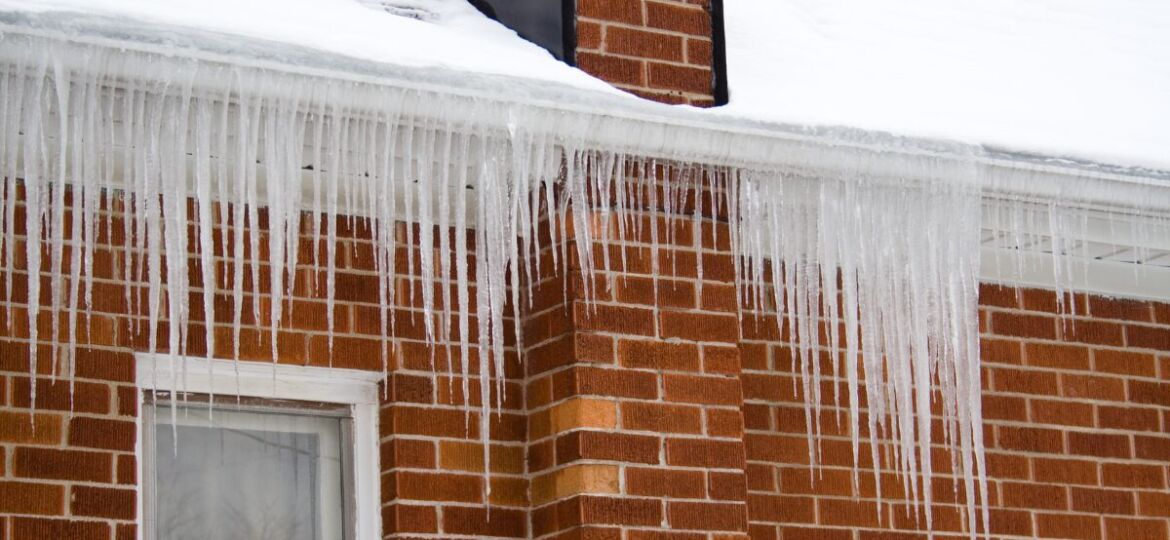
As the cold months roll in, homeowners are presented with a unique set of challenges. Winter weather, with its freezing temperatures, snow, and ice, can lead to various issues within the home, with one of the most threatening being water damage. Homeowners, property managers, and insurance professionals need to understand the specific risks and how to mitigate them.
Common Causes of Winter Water Damage
During the winter, several key factors contribute to water damage:
Frozen Pipes
When water freezes in your pipes, it causes an increase in pressure, often leading to them bursting. This can result in extensive flooding and property damage.
Ice Dams
Ice dams occur when snow melts on the warm sections of your roof and refreezes at the colder eaves. This ice buildup can force water under the roof shingles, leading to leaks.
Roof Leaks
Any breach in your roofing materials is a potential entry point for water. Winter weather, with its heavy snow and ice, can exacerbate these issues and lead to internal water damage.
Burst Water Heaters
Old or neglected water heaters can fail under the stress of constantly heating water to counteract the cold, causing a rupture and immediate water spillage.
The Impacts of Water Damage
Water damage, left unaddressed, can have severe consequences:
Structural Damage
Excess moisture can weaken the structure of your home, leading to a compromised foundation and walls, along with the potential for sagging ceilings.
Mold Growth
Moisture is a breeding ground for mold. When left untreated, water damage can lead to widespread mold infestation, which poses health risks and requires costly remediation.
Health Hazards
Mold and damp conditions can exacerbate respiratory issues and create a range of health hazards, particularly for young children and the elderly.
Financial Implications
The cost of repairing water damage can be substantial. Without insurance, homeowners could face a sizable out-of-pocket expense.
Prevention Measures
To guard against winter water damage, a proactive approach is essential:
Insulating Pipes
Adding insulation to vulnerable pipes can prevent freezing and bursting, a major deterrent for water damage.
Sealing Cracks and Gaps
Sealing any potential entry points for water in your home’s exterior can reduce the risk of leaks and seepage.
Clearing Gutters and Downspouts
Properly maintained gutters and downspouts are crucial in directing water away from your home, preventing overflows and ice dam formation.
Maintaining Heating Systems
Regular maintenance of your heating system ensures it functions optimally and can also prevent burst pipes due to freezing.
Steps to Take in Case of Water Damage
Respond promptly and effectively if water damage does occur:
Assess Damage
Evaluate the extent of the water damage. Safety should be your primary concern; never enter standing water without first turning off the power.
Shut Off the Water Supply
Stopping the source of the water is the first step in preventing further damage. Know where your main shut-off valve is and how to operate it.
Restoration by Professionals
Engage experienced restoration professionals who can quickly and thoroughly mitigate the damage.
Conclusion
The inevitability of winter weather demands vigilance and preparedness from every homeowner. Implementing effective prevention measures is the key to minimizing the risks of water damage. However, should you face this unfortunate occurrence, it is crucial to act swiftly. Partnering with a reputable restoration company like Water Damage America can make all the difference in efficiently restoring the safety and integrity of your home. Contact Water Damage America today for a comprehensive assessment and timely repair service to secure your home against the detriments of water damage.

